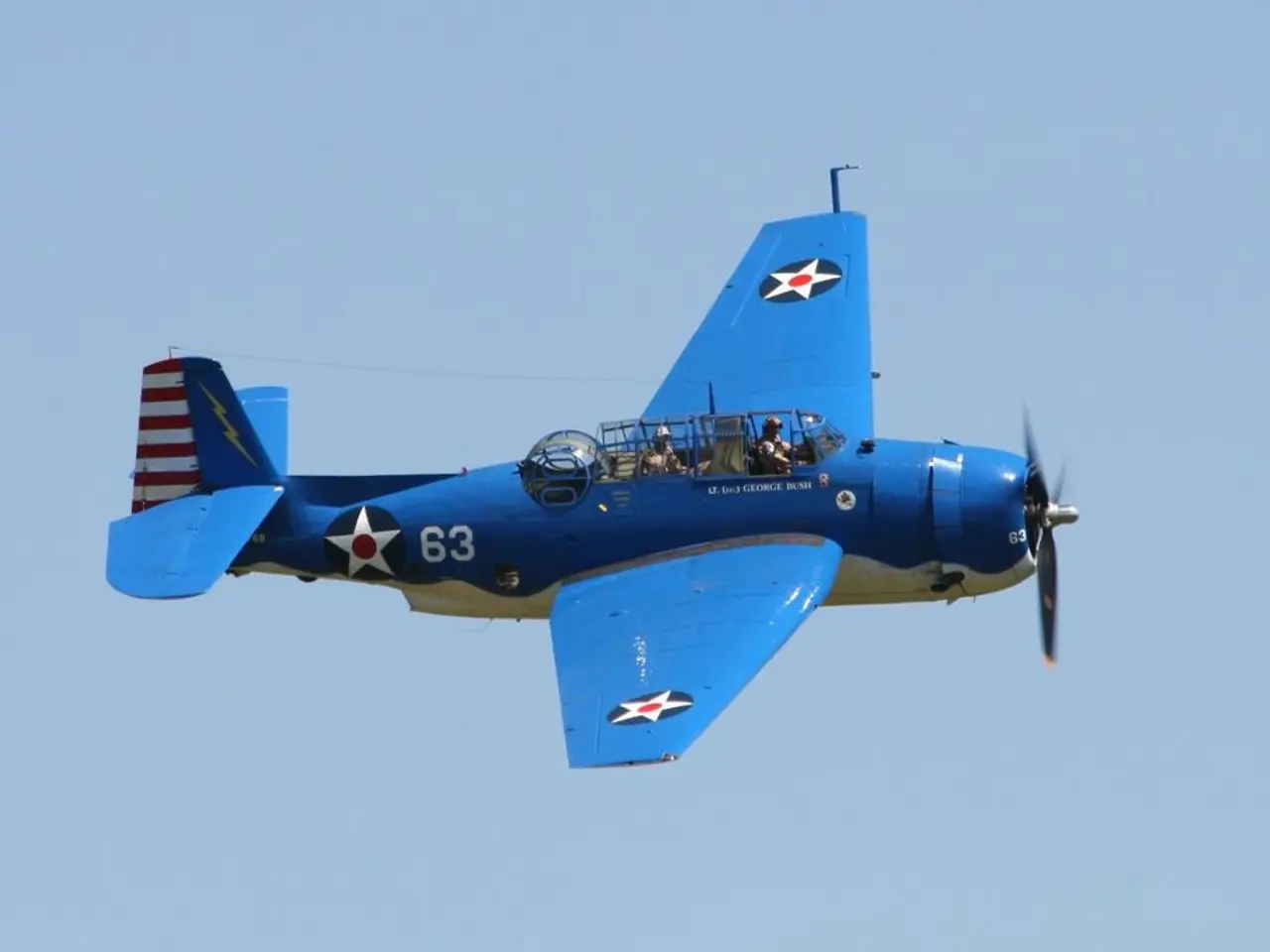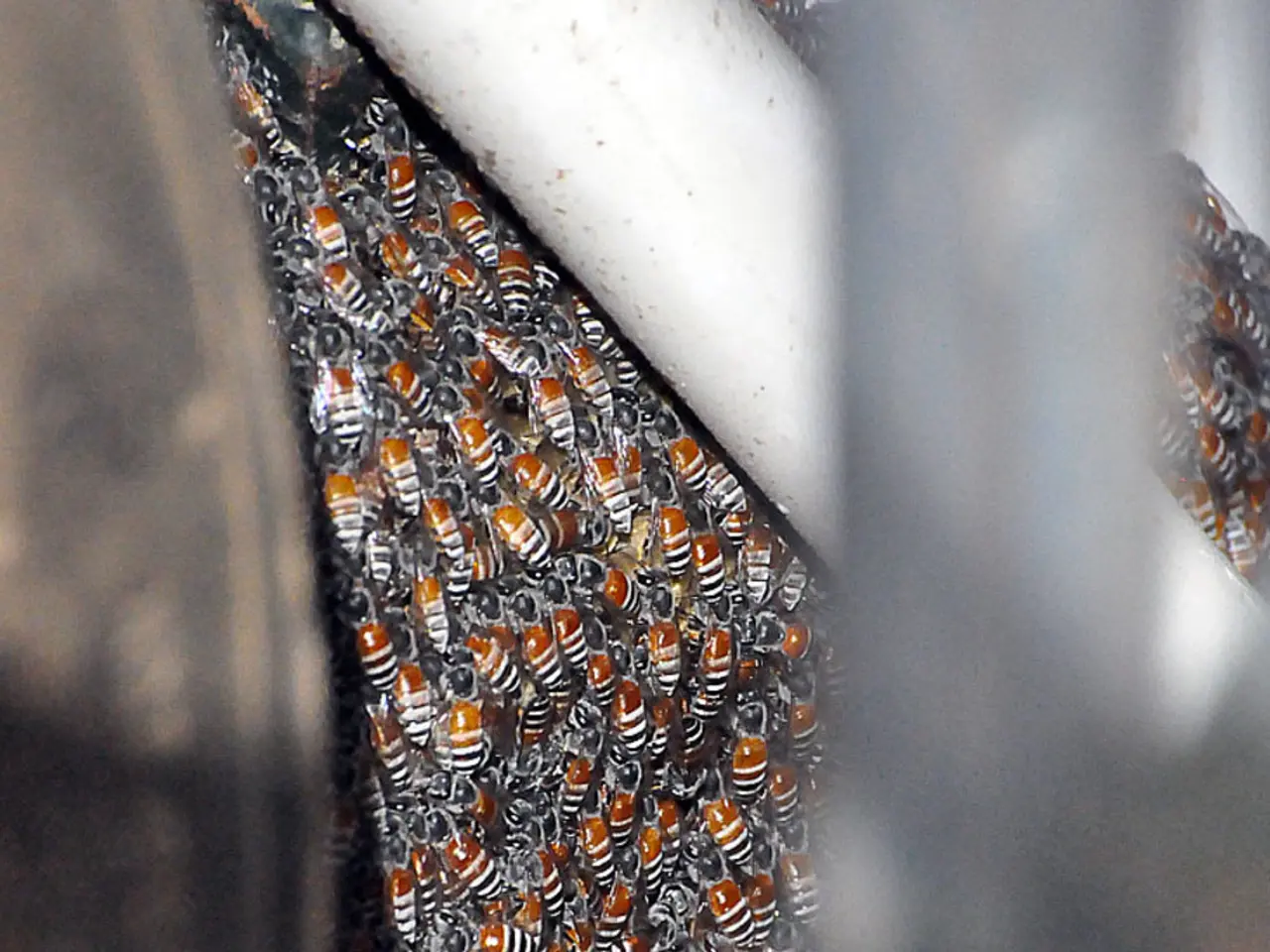B-21 Bomber's Top Commander Announces Second Flight Imminent
The U.S. Air Force is set to boost the production of the B-21 Raider, a highly anticipated next-generation long-range bomber, following a $4.5 billion funding boost from the recent reconciliation bill. This additional investment aims to increase Northrop Grumman's production capacity, with the majority of the work taking place at their facility in Palmdale, California.
The B-21 Raider, considered an evolutionary leap in technology rather than a generational quantum leap, has been developed with input from the Air Force, Northrop Grumman, and Air Force Materiel Command. Lessons learned from the B-2's initial and upgraded capabilities have been incorporated into the design of the B-21, ensuring a smooth transition for the Air Force's bomber fleet.
The B-21 Raider is designed to be less maintenance-intensive than its predecessor, the B-2, with optimizations for easier maintenance built into its design. This focus on maintenance efficiency reflects the Air Force's long experience with the B-2 and its commitment to creating a reliable and robust platform.
At the time of writing, at least six B-21 aircraft are in various stages of construction, and the first aircraft took flight in November 2023. The Northrop Grumman aeronautics president has stated that the first aircraft is currently flying approximately two times per week. The B-21 will be certified for both nuclear and conventional missions from the outset.
While the exact number of B-21 aircraft planned for production with this increased funding has not been explicitly stated, sources suggest that the goal is to produce more than 100 bombers, with some suggesting an ambitious target of 145. The production version and the fielding version of the B-21 are tightly wound to ensure no lag in combat capability.
It's worth noting that unlike the original 2015 contract, the immediate plan does not include the development of both crewed and uncrewed versions of the B-21. The low production rate of the B-21 was intentional to protect it from budget cuts, but with the increased funding, the Air Force is now poised to ramp up production and deliver more B-21s to the fleet.
The B-21's design philosophy is to perfect what was learned on the B-2, advance some of its capabilities, and make it a more robust and reliable platform. This approach, combined with the lessons learned from recent geopolitical events such as Russia's invasion of Ukraine and China's expansion of strategic forces, has contributed to the consideration of increasing the number of B-21 aircraft.
The B-21 bomber is set to fly for a second time soon, marking another milestone in the development of this advanced aircraft. As the Air Force moves forward with increasing the production capacity of the B-21, the world will be watching to see how this next-generation bomber will shape the future of long-range strike capabilities.
- The Air Force's planned boost in production of the B-21 Raider includes the work taking place at Northrop Grumman's facility in Palmdale, California.
- The B-21 Raider, with its focus on maintenance efficiency and optimizations for easier maintenance, is being developed as a less maintenance-intensive aircraft compared to its predecessor, the B-2.
- With the increased funding, the Air Force aims to produce more than 100 B-21 bombers, with an ambitious target of 145 aircraft suggested by some sources.
- The B-21 will be certified for both nuclear and conventional missions from the outset, making it a versatile aircraft within the Air Force's arsenal.
- As the B-21 moves closer to fleet deployment, its design philosophy of perfecting the capabilities of the B-2 and increasing its robustness will shape the future of long-range strike capabilities, especially in the context of geopolitical tensions involving countries like Russia and China. Furthermore, the Air Force's Space Force, in conjunction with technology advancements, will likely play a significant role in determining the B-21's impact on aerial warfare, possibly even extending its capabilities into space. Additionally, the Air Force's commitment to maintaining state-of-the-art equipment and the military's long-standing connection to sports could inspire pilots to push the boundaries of the B-21's capabilities, much like athletes strive for excellence in their respective sports.




